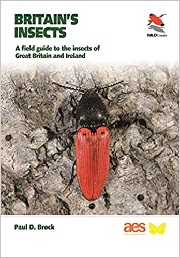Britain’s Insects: A field guide to the insects of Great Britain and Ireland

Paul D. Brock
AES (Amateur Entomologists’ Society), £25.00
This photographic guide is a game-changer of a book, a truly significant contribution to the study of our insects and also excellent value for money. Within more than 600 information-packed pages it contains a remarkable amount of information, centred on over 2,500 photographs of an impressive diversity of insect families, supplemented by an introductory section to help distinguish insect orders, identification keys for some groups, distribution maps, brief descriptions of photographed species, phenology charts, glossary and even some QR codes to access sonograms.
Small and obscure insect groups inevitably have less coverage than butterflies or dragonflies, but there has been a clear attempt to make coverage as wide-ranging as possible. This includes species that have been introduced to the UK, and the coverage of groups such as stick insects is particularly comprehensive. Taxonomic affiliations of the species reflect current concepts of the higher taxonomy of insects (termites are nested within cockroaches and ‘Phthiraptera’ is retained, but within quotes, for example) and the work as a whole serves as a benchmark for our current understanding the British fauna.
The photographs inevitably vary a little in usefulness, with a few that are rather small or struggling to separate insects from their background, but the vast majority of the photographs are valuable. There must also be some errors in a book of this size, but I only spotted one (a eurytomid parasitoid located within the gall wasps).
Anyone interested in insects will find Britain’s Insects of value. Experienced entomologists will come across nuggets of information in their non-specialist groups, and newcomers will be provided with a wealth of information across insects as a whole. Reflecting the latter, I would still be tempted to give a copy of one of the Chinery field guides first to a budding naturalist – photographs are rarely as good as a brilliant painting and the sheer quantity of information here could be daunting for youngsters.
Dr S G Compton


